
"Fast and quick for a busy family. We use our fireplace regularly now. Thank you."
Paulson Family (Windermere)

"Just when you need it Luxe is there to get you fired up! Best part of being in Alberta is the backyard fires."
Arnie Simms & Family (Riverbend)

"No fuss straight to us. No time anymore to piss around at the store. We have plenty of wood now."
Thomas Arnacker (Aspen Gardens)

"Yea this is great to have you come out and take care of our firewood while we relax!"
Mason Family (Rural Sherwood Park)

"We've got other priorities and businesses to run so it's nice to have a quality service like yours."
Rob Perloux (St. Albert)

"Fantastic guys and great service!
Convenient, good quality and delivery to my door which is awesome."
Heather (Westbrook Drive)

"Fast and quick for a busy family. We use our fireplace regularly now. Thank you."
Paulson Family (Windermere)

"Just when you need it Luxe is there to get you fired up! Best part of being in Alberta is the backyard fires."
Arnie Simms & Family (Riverbend)

"No fuss straight to us. No time anymore to piss around at the store. We have plenty of wood now."
Thomas Arnacker (Aspen Gardens)

"Yea this is great to have you come out and take care of our firewood while we relax."
Mason Family (Rural Sherwood Park)

"We've got other priorities and businesses to run so it's nice to have a quality service like yours."
Rob Perloux (St. Albert)

"Fantastic guys and great service!
Convenient, good quality and delivery to my door which is awesome."
Heather (Westbrook Drive)
Birch as Firewood: Qualities of Burn Rate, Heat Output, and Aroma Discussed
Birch wood is a popular choice for firewood due to its various qualities, including its burn rate, heat output, and aroma. Birch is a hardwood that is known for its bright white bark and slender trunk. It is a common tree species found in the northern hemisphere and is used for a variety of purposes, including furniture, flooring, and firewood.
The key characteristics of birch as a firewood option:
Efficiency in heat production
Ease of lighting
Overall performance compared to other types of wood
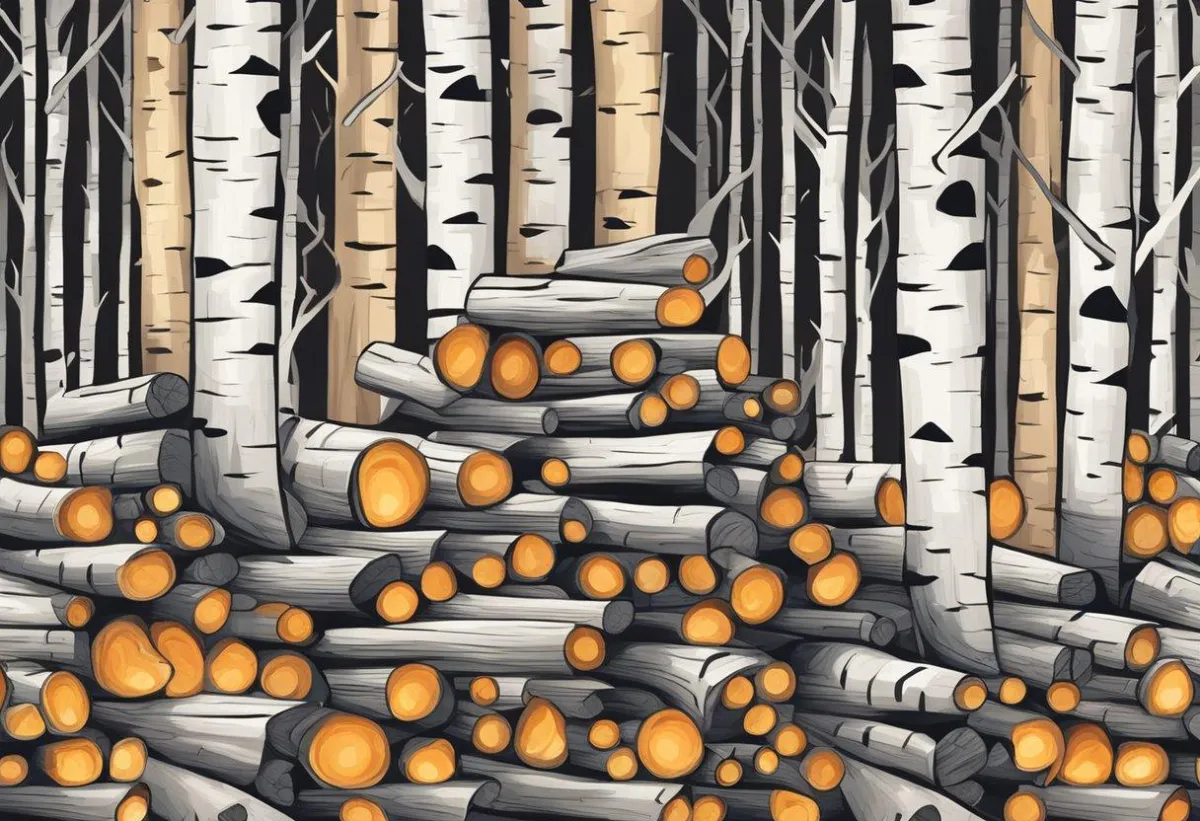
When it comes to using birch as firewood, there are several factors to consider. Birch burns slowly and generates a great amount of heat, making it a great firewood. Additionally, birch dries quickly and splits very easily, making it a fantastic firewood. Birch also emits a unique aroma when burned, which many people find pleasant.
Key Takeaways
Birch wood is a popular choice for firewood due to its slow burn rate, great heat output, and aroma.
Birch wood burns slowly and generates a mild amount of smoke, making it a great indoor and outdoor firewood.
Characteristics of Birch as Firewood

Birch is a popular hardwood used for firewood due to its favorable properties. It is known for its sweet smell and wintergreen aroma, which make it an appealing choice for those who enjoy the scent of burning wood. In this section, we will discuss the characteristics of birch as firewood, including its heat production, BTU ratings, and aroma.
Heat Production and BTU Ratings
Birch wood has high heat output, which makes it a decent choice for heating large spaces. Birch has a BTU rating of approximately 20.8 million per cord. This rating is slightly lower than other hardwoods such as oak, hickory, and maple, but it still provides enough heat to keep a room warm during the winter months. The heat production of birch wood can be affected by several factors, including its sap content and moisture content.
Birch Wood Aroma and Smoke Quality
One of the most appealing qualities of birch as firewood is its sweet smell and wintergreen aroma. When burned, birch wood produces a pleasant scent that many people find enjoyable. The wintergreen aroma is particularly strong, which can add to the ambiance of a cozy fire.
Birch wood also produces less smoke than other types of firewood, which makes it a good choice for those who want to minimize the amount of smoke produced by their fire. The dense fibers of birch wood make it burn more cleanly than other types of firewood, which can reduce the amount of creosote buildup in chimneys and other heating appliances.
Overall, birch is a good premium firewood for those who want a hardwood with a moderate heat output, pleasant aroma, and minimal smoke production. Its properties make it a popular choice for heating small spaces and creating a cozy atmosphere during the winter months.
Types of Birch and Their Properties
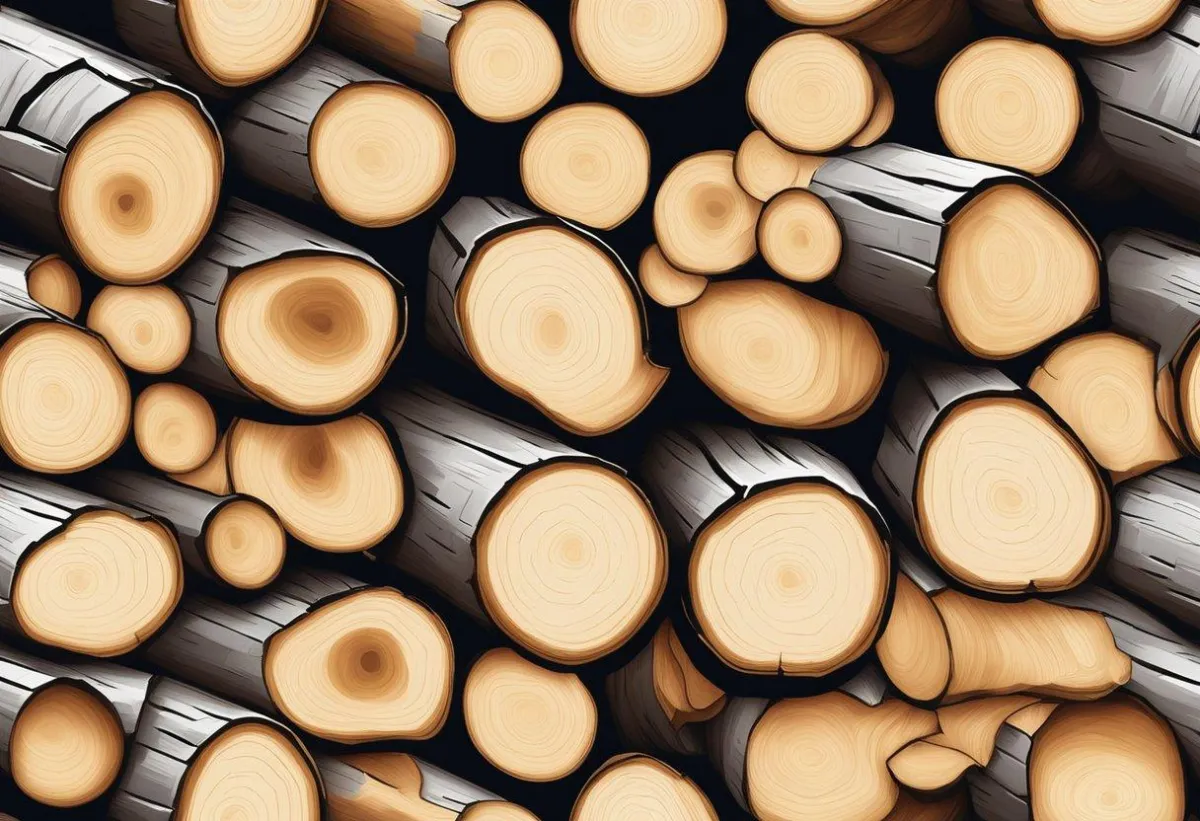
Comparing Birch Varieties
Birch trees are found in different species, each with its unique properties. The most common birch species used for firewood include yellow birch, black birch, white birch, sweet birch, grey birch, cherry birch, mountain mahogany, and paper birch.
Yellow birch is a hardwood species that produces high-quality firewood. Its wood is dense and heavy, making it burn slowly and produce high heat output.
Black birch (also known as mountain mahogany), sweet birch, and cherry birch are probably the most desirable firewood within the birch family. The wood has dense fibers that allow it to burn long and hot. These qualities alone make it a prized firewood. The black birch also has a unique sweet smell when it burns.
White birch (also known as paper birch) is a popular firewood choice due to its easy lighting and fast-burning qualities. Its wood is less dense than other birch species, making it burn quickly and produce less heat output. Grey birch, also known as swamp birch, is a less common firewood choice, but it still produces decent heat output and burns well.
Identifying Birch Trees
Identifying birch trees can be easy if you know what to look for. Birch trees have distinctive leaves that are oval-shaped and have a pointed tip. The edges of the leaves are serrated or toothed, and the leaves are arranged in an alternating pattern on the branches. Birch trees also have a distinctive bark that is white or light-colored and has dark horizontal lines or fissures. The bark peels off in thin, papery layers, exposing a smooth, light-colored layer underneath.
Different species of birch trees have slightly different characteristics that can help you identify them. For example, yellow birch has a yellowish-brown bark that peels off in curly strips, while black birch has a dark brown or black bark that is smooth and shiny. White birch has a white bark that peels off in thin, papery sheets, while grey birch has a greyish-brown bark that peels off in thin, papery layers. Cherry birch has a reddish-brown bark that peels off in curly strips, and mountain mahogany has a dark brown or black bark that is smooth and shiny.
Seasoning and Storage of Birch Firewood
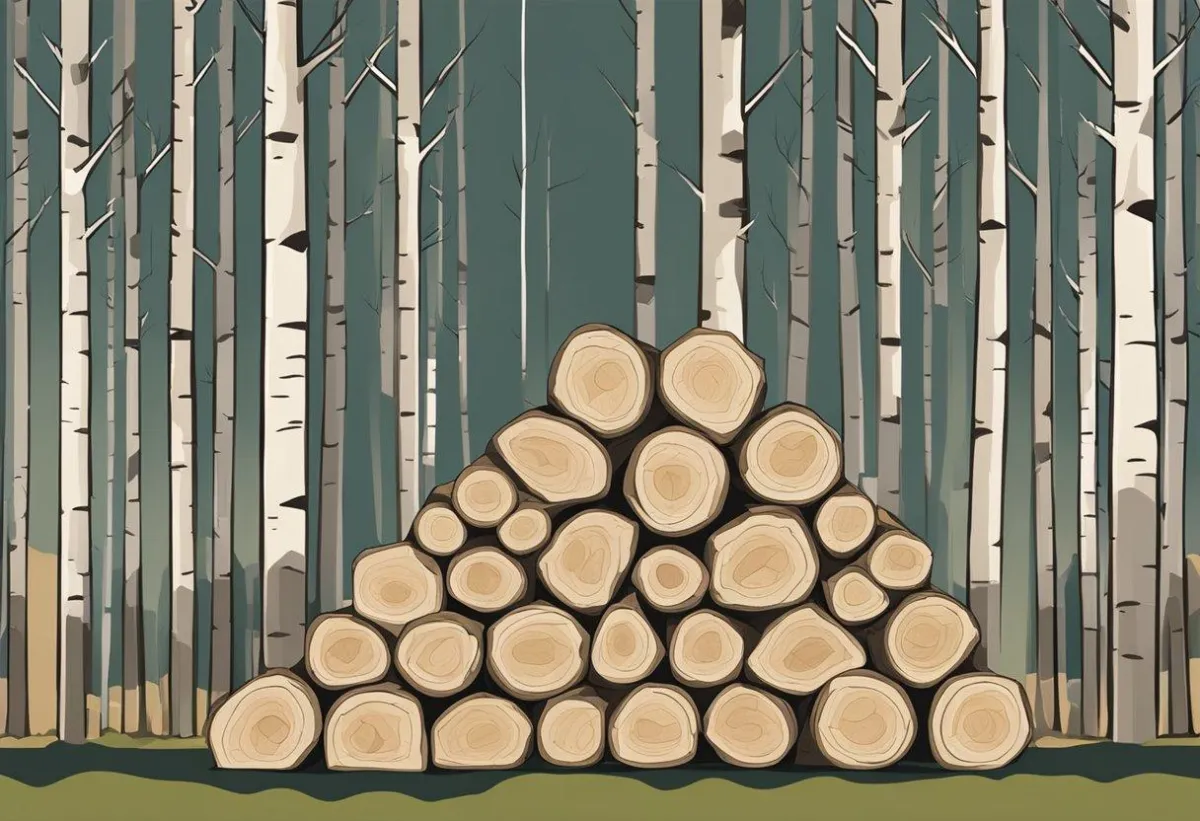
Optimal Seasoning Time
Birch firewood should be seasoned properly before use to ensure optimal burn rate and heat output. The seasoning process involves drying the wood to reduce its moisture content. Green birch wood has a high moisture content, which can cause the wood to burn slowly and produce less heat.
The optimal seasoning time for birch firewood is between 6 to 12 months. During this time, the wood should be stored in a dry, well-ventilated area. The wood should be stacked in a way that allows air to circulate around it, such as in a criss-cross pattern. This will help the wood dry evenly and prevent mold growth.
Storage Tips to Prevent Wood Rot
Proper storage of birch firewood is crucial to prevent wood rot. Wood rot is caused by fungi that grow in moist environments. Moisture can accumulate in the wood if it is stored in a damp area or if it is not properly covered.
To prevent wood rot, the birch firewood should be stored in a dry area, such as a garage or shed. It should be stacked off the ground on a pallet or rack to allow air to circulate underneath. The wood should also be covered with a tarp to protect it from rain and snow.
It is important to note that birch firewood dries slower than other types of hardwood, such as oak or maple. This means that it may take longer to season properly and may require more attention during storage to prevent wood rot. By following these tips, you can ensure that your birch firewood is properly seasoned and stored, and ready to provide warmth and comfort during the colder months.
Using Birch in Different Fire Settings
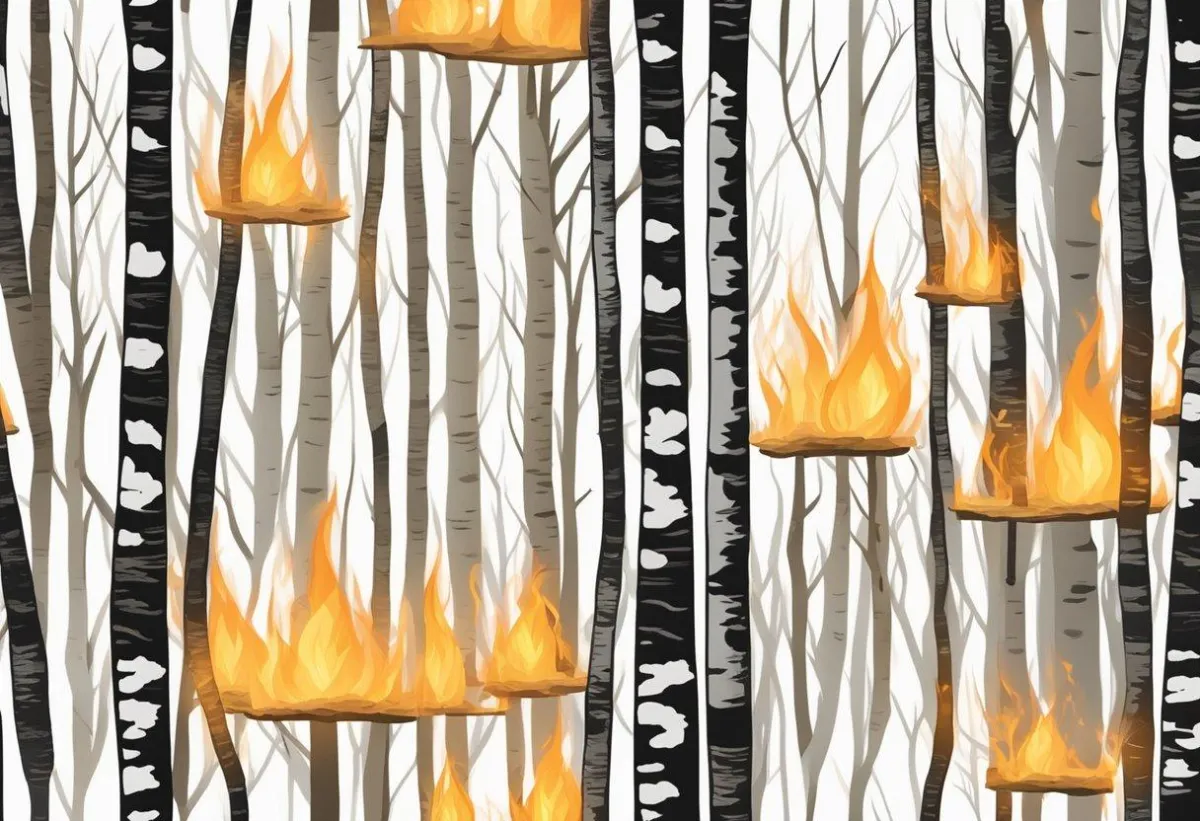
Birch wood is a versatile option for various fire settings, including fireplaces, campfires, and cooking. Here are some tips on how to use birch wood in different fire settings:
Birch in Fireplaces and Campfires
Birch wood is an excellent choice for fireplaces and campfires due to its bright flames and pleasant aroma. It burns cleanly and produces minimal smoke, making it ideal for indoor burning.
When using birch wood in a fireplace, it is essential to use dry, seasoned wood to prevent the buildup of creosote in the chimney. Creosote is a highly flammable substance that can cause chimney fires. It is also recommended to use a fire starter, such as newspaper or kindling, to get the fire going.
For campfires, birch wood is a great option for both cooking and warmth. Birch wood burns hot and fast, making it perfect for roasting marshmallows and hot dogs. It is also an excellent choice for smoking meats due to its mild flavor.
Cooking with Birch Wood
Birch wood is an excellent option for cooking over a fire due to its clean burn and mild flavor. It is ideal for grilling, smoking, and roasting, and can be used for a variety of meats and vegetables.
When cooking with birch wood, it is essential to use dry, seasoned wood to prevent the food from taking on a bitter taste. It is also recommended to use a grill or cooking grate to prevent the food from coming into direct contact with the flames.
In conclusion, birch wood is a versatile and reliable option for various fire settings, including fireplaces, campfires, and cooking. With its bright flames, pleasant aroma, and clean burn, birch wood is a great choice for anyone looking to enjoy a cozy fire or cook over an open flame.
Comparative Analysis of Firewood Types
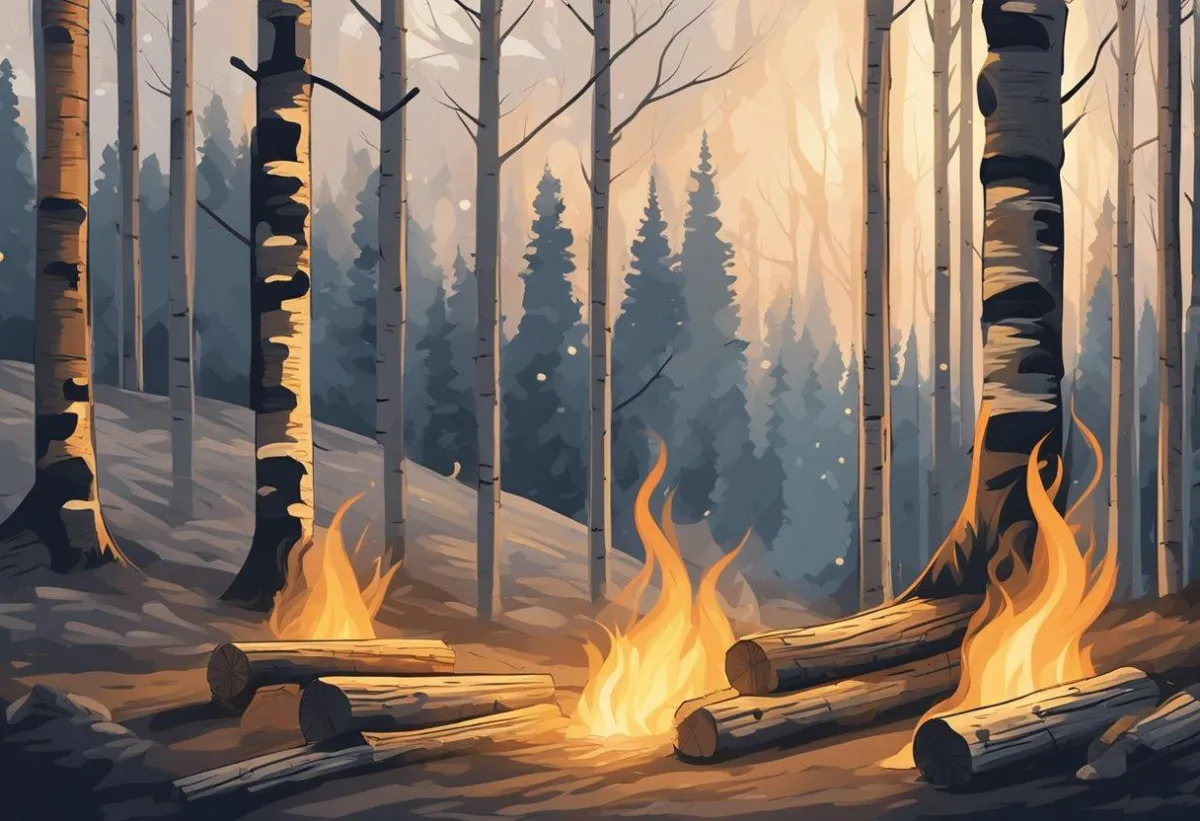
Birch Versus Other Hardwoods
When it comes to firewood, there are many options available, each with its pros and cons. Birch wood is a popular choice for firewood due to its moderate heat output, easy splitting, and pleasant aroma. However, how does it compare to other hardwood options such as oak, cherry, and maple?
In terms of heat output, oak and cherry are known to produce higher heat than birch. Oak is considered to be one of the best hardwoods for firewood due to its high heat output and long burn time. Cherry wood also produces high heat and a pleasant aroma, making it a popular choice for firewood. Maple wood, on the other hand, produces less heat than birch but burns longer.
In terms of ease of splitting, birch is considered to be one of the easiest hardwoods to split, along with elm. Oak and cherry, on the other hand, are known to be harder to split due to their density.
When it comes to value, oak is considered to be the most valuable hardwood for firewood due to its high heat output and long burn time. Birch, while not as valuable as oak, is still a good choice for firewood due to its moderate heat output and easy splitting.
Birch and Softwood Differences
Softwood options such as pine are also popular choices for firewood due to their abundance and low cost. However, there are some key differences between softwood and hardwood options.
Softwood options such as pine produce less heat than hardwood options such as birch and oak. They also tend to burn faster, meaning that more wood is needed to maintain a fire. However, softwood options are typically easier to light and are a good choice for kindling.
Overall, while there are many options available for firewood, birch is a good choice due to its moderate heat output, easy splitting, and pleasant aroma. However, it is important to consider the specific needs of the user when choosing a firewood option.
Monday - Saturday
1:00PM - 12:00AM (Midnight)
Sunday
CLOSED
2024© Luxe Logs. All Rights Reserved.
